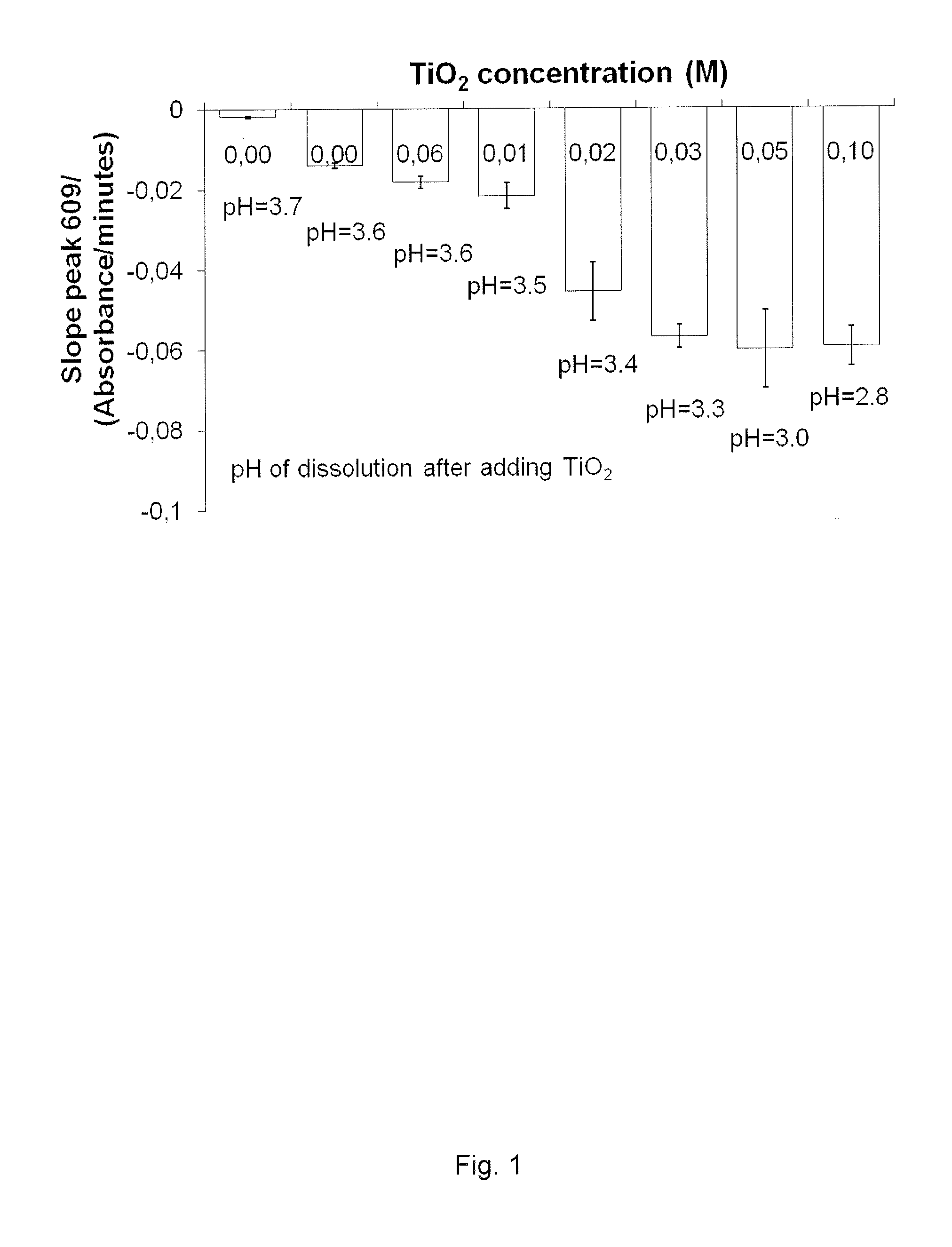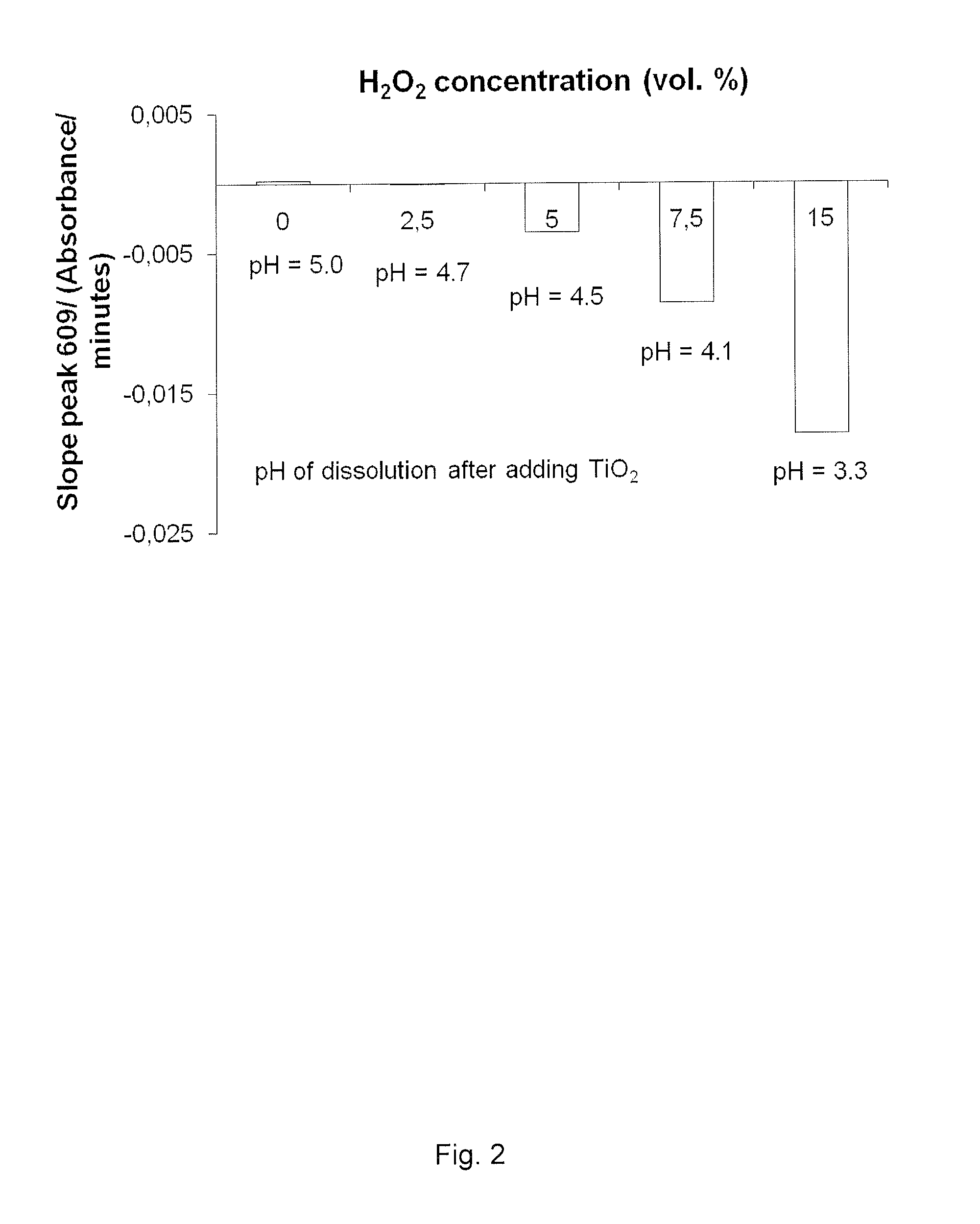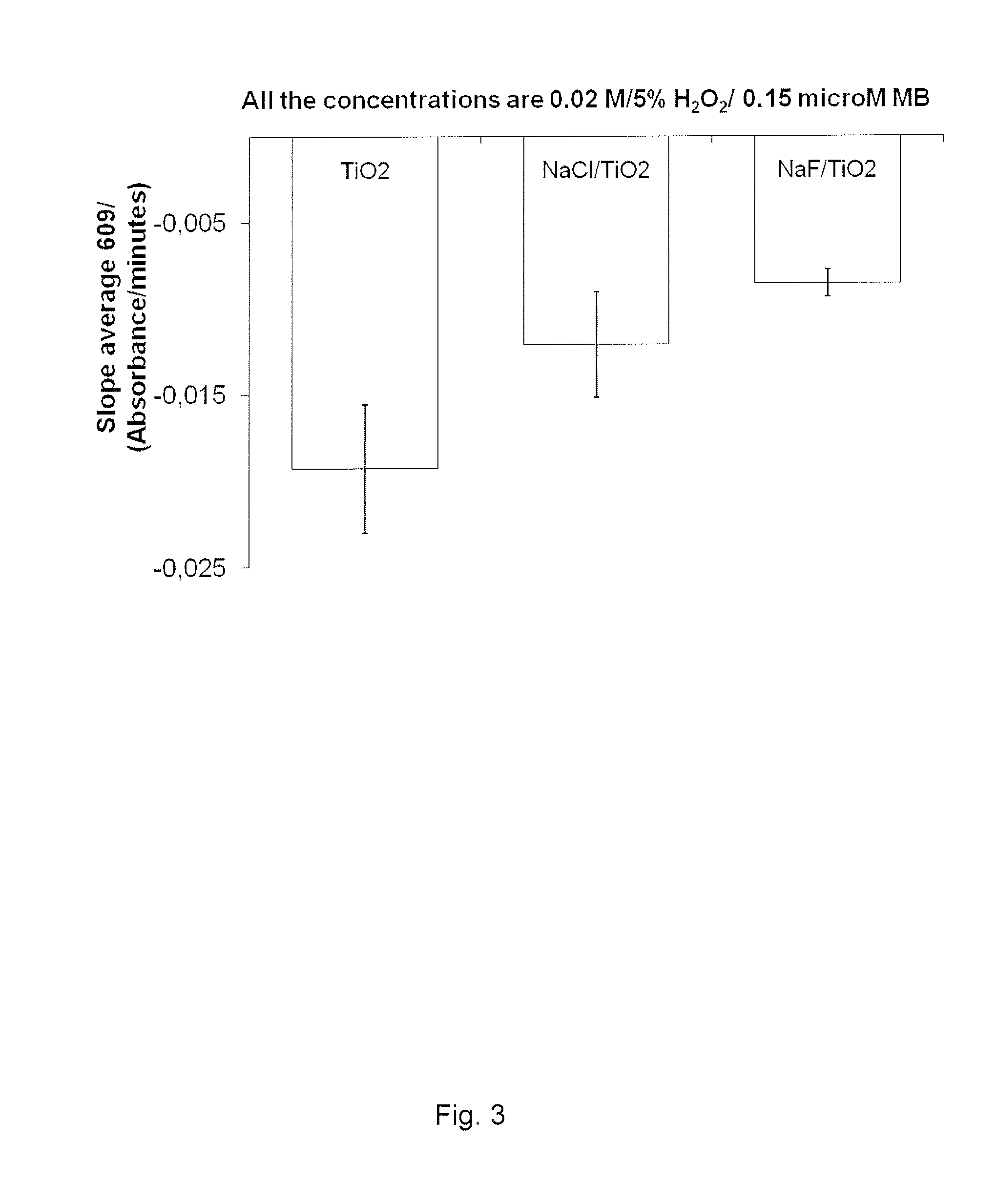Composition comprising nanoparticles of ti02
a technology of nanoparticles and nanoparticles, applied in the field of wound care products, can solve the problems of silver ions being used in wound care products, serious disadvantages such as allergic reactions of patients with silver sensitivity, and cannot be used in radiation treatment or x-ray examination, diathermy or magnetic resonance imaging, together with oxidising agents, such as hypochlorite solutions or hydrogen peroxid
- Summary
- Abstract
- Description
- Claims
- Application Information
AI Technical Summary
Benefits of technology
Problems solved by technology
Method used
Image
Examples
example 1
Methylene Blue Degradation when Mixed H2O2 at 15 Vol. % and TiO2 at Various Concentrations
[0110]Methylene blue (MB) is a heterocyclic aromatic chemical compound with molecular formula: C16H18N3SCl (AldrichSigmaAldrich, Oslo, Norway). It has many uses in a range of different fields, such as biology and chemistry. MB exemplifies organic materials and can thus be used as agent to simulate bacteria as seen in several publications and is commonly used when investigating the degradative properties of TiO2. A degradadation of MB therefore can be used as a model for the in vivo degradation of organic material, such as bacteria, or dead, damaged, and / or infected tissue. At room temperature it appears as a solid, odourless, dark green powder that yields a blue solution when dissolved in water. When degradated in solution, methylene blue becomes colourless. When methylene blue is analysed by UV-vis spectrophotometry (Lambda 25, Perkin Elmer, USA), it absorbs light at 690 cm. This machine was u...
example 2
Methylene Blue Degradation when Mixed with H2O2 at 15% and TiO2 at Various Concentrations
[0114]The aim was to measure if methylene blue could be degradated by TiO2 nanoparticles only (Aeroxide P25, Evonik AG, Essen, Germany), without H2O2 or UV irradiation. Then, an increasing concentration of H2O2 (PERDROGEN® 30% H2O2 (w / w), Sigma Aldrich AS, Oslo, Norway) was added to the suspension until a maximum concentration of 15 vol. %. The procedure of the experiment was the same as explained in example 1.
[0115]The results are presented in FIG. 2. Almost no degradation was found when only TiO2 at 0.5 g / L was mixed with MB. Adding 5 vol. % concentrated H2O2 increased the MB degradation. Increasing the concentration of H2O2 in the suspension increased the MB degradation in a linear way. Increasing the concentration of H2O2 decreased the pH from 4.9 without H2O2, to 3.3 with H2O2 at 15 vol. %.
[0116]The TiO2 alone could not break down the MB molecules; H2O2 must be present to reach this purpose...
example 3
Methylene Blue Degradation when Mixed with the Suspension of H2O2 at 5% and TiO2 at 1.6 g / L Doped with NaCl at 0.8 g / L or NaF at 0.4 g / L
[0117]From examples 1 and 2, H2O2 (PERDROGEN® 30% H2O2 (w / w), Sigma Aldrich AS, Oslo, Norway) and TiO2 (Aeroxide P25, Evonik AG, Essen, Germany) concentrations were chosen in order to create a suspension that uses this synergical effect but as well which could be used in a physiological environment ([H2O2]3).
[0118]The aim was to discover whether or not NaCl and NaF salts could further increase the MB degradation when introduced in the chosen suspension.
[0119]The results are presented in FIG. 3.
[0120]Interestingly, doping the suspension with NaCl reduced the MB degradation by half compared with the suspension with only TiO2 and H2O2. Doping with NaF (Sigma Aldrich AS, Oslo, Norway) was even stronger in reducing the MB degradation, almost preventing this degradation to occur compared with the suspension with only TiO2 and H2O2.
[0121]Doping the H2O2 / Ti...
PUM
 Login to View More
Login to View More Abstract
Description
Claims
Application Information
 Login to View More
Login to View More - R&D Engineer
- R&D Manager
- IP Professional
- Industry Leading Data Capabilities
- Powerful AI technology
- Patent DNA Extraction
Browse by: Latest US Patents, China's latest patents, Technical Efficacy Thesaurus, Application Domain, Technology Topic, Popular Technical Reports.
© 2024 PatSnap. All rights reserved.Legal|Privacy policy|Modern Slavery Act Transparency Statement|Sitemap|About US| Contact US: help@patsnap.com










